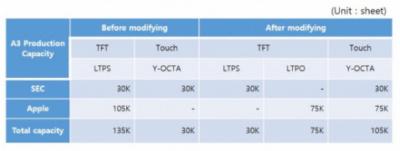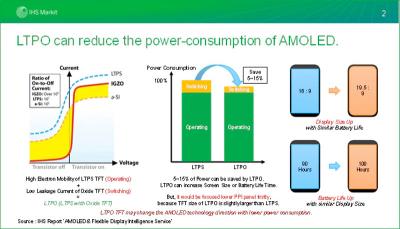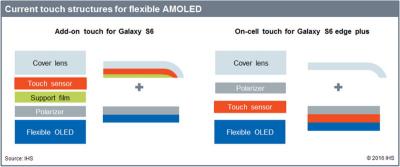Samsung Display is updating its A3 flexible OLED production line, to support two new technologies. The TFT process is being updated, for some of the capacity, to Apple's LTPO technology. LTPO is currently used in Apple's Watch displays, but next-generation iPhones will adopt it as well.

According to UBI, Samsung will dedicate 75,000 monthly substrates to produce smartphone LTPO displays. According to some reports, Samsung has also developed its own backplane technology which is similar to LTPO, it could be that some of this capacity will be used for Samsung's own displays.
The second technology that Samsung is adding is on-cell touch, or Y-OCTA as it calls it. According to reports some of Apple's iPhone 12 modules that will be introduced later this year will use Samsung's Y-OCTA. According to UBI, Samsung will dedicate 30,000 monthly substrates on its A3 fab to produce Apple's Y-OCTA smartphone flexible OLED displays.
In general, both modifications will reduce Samsung's total capacity, dedicated to Apple, from 105k monthly substrates to 70k monthly substrates.
LTPO (Low-Temperature Polycrystalline Oxide combines both LTPS TFTs and Oxide TFTs (IGZO, Indium Gallium Zinc Oxide). In LTPO backplanes, the switching circuits are using LTPS while the driving TFTs use IGZO materials. This leads to power saving of around 5-15% compared to the currently-used LTPS backplanes. The main drawback of LTPO, however, is that the IGZO TFTs are larger and so the display density may be compromised.

According reports, Samsung's LTPO panels can lower its drive rate from 60Hz (LTPS) to 1Hz, and driving power is reduced to one third of a comparable LTPS driving power.
Y-OCTA (or Youm On-Cell Touch AMOLED) is Samsung's term for its on-cell touch flexible AMOLED technology.

Y-OCTA panels are thinner than Samsung's previous flexible Add-On Touch panels as the touch sensor is deposited directly on the encapsulation (TFE) layer. The optical features are also better as the touch layer is below the polarizer and enables the use of a non-ITO grid, there's no need for a support film (see image above) and the number of layers is lower.
Samsung estimates that Y-OCTA also cuts production costs by around 30%, but it struggled with lower production yields and volumes which limited adoption until now.

